Sugar Cookies: It's Science!
The First Reader gave me a lovely Christmas present. When he told me about it, he apologized. "You're going to have to do more work when you get it." On Christmas morning when I unwrapped it, I understood. Cookie cutters, clever little science cutters with fiddly impression-making bits inside them. A test tube, microscope, Erlenmeyer flask, and a beaker. Just the right shapes for my life in the lab.
The problem was that I knew these cookie cutters, unlike the ones I have for stars, gingerbread men, and so forth, were going to require just the right kind of dough. It needed to hold it's shape precisely during baking. It needed to be tough enough to handle, but still delicate to the mouth. And they needed to taste good. Cardboard cookies that look great are no fun at all.
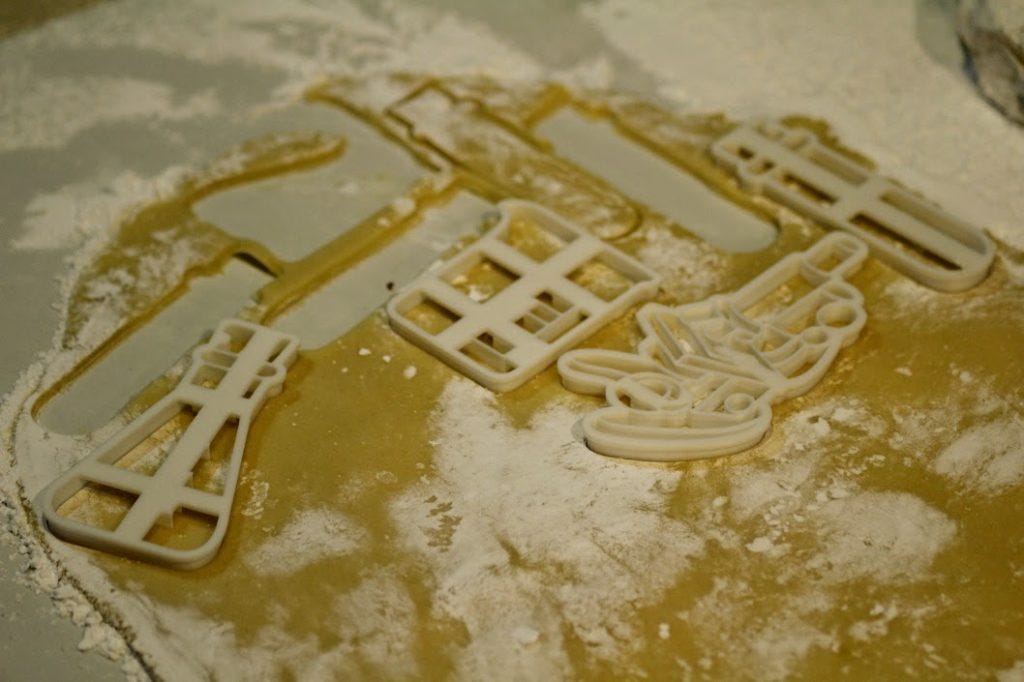
The cookie cutters were created by 3D printing, which just makes them more science-y!
I have several reliable sugar cookie doughs, one I love for cutting shapes into. But all of them call for rising agents, which I knew would push the impressions in the science cutters out to being invisible. I debated trying a shortbread, and then discarded that idea - shortbread is very delicate, part of it's charm, but does not handle well. I asked for recipes, got some I'll try another time, and then went to the internet to see what other people using similar cutters have done. The final recipe I developed from that search is below, and it is crisp, buttery, sweet and delicious. It's sweet enough I opted not to 'flow' icing over the whole cookie, but to use royal icing (I used Alton Brown's recipe) to simply highlight the impressed details.
Things I learned as I worked with the cutters: the dough has to be just the right thickness. Too thick, and the cutters won't release the dough. Too thin, and the internal impressions don't show. I was using powdered sugar to roll the dough out - never use flour, as you'll work it into the dough and wind up with tough cookies. Powder the cutters early and often, and even then, I was using a toothpick to gently tease out things like the tops of the test tube and flask. To my surprise, the most complex shape, the microscope, gave me the least trouble.
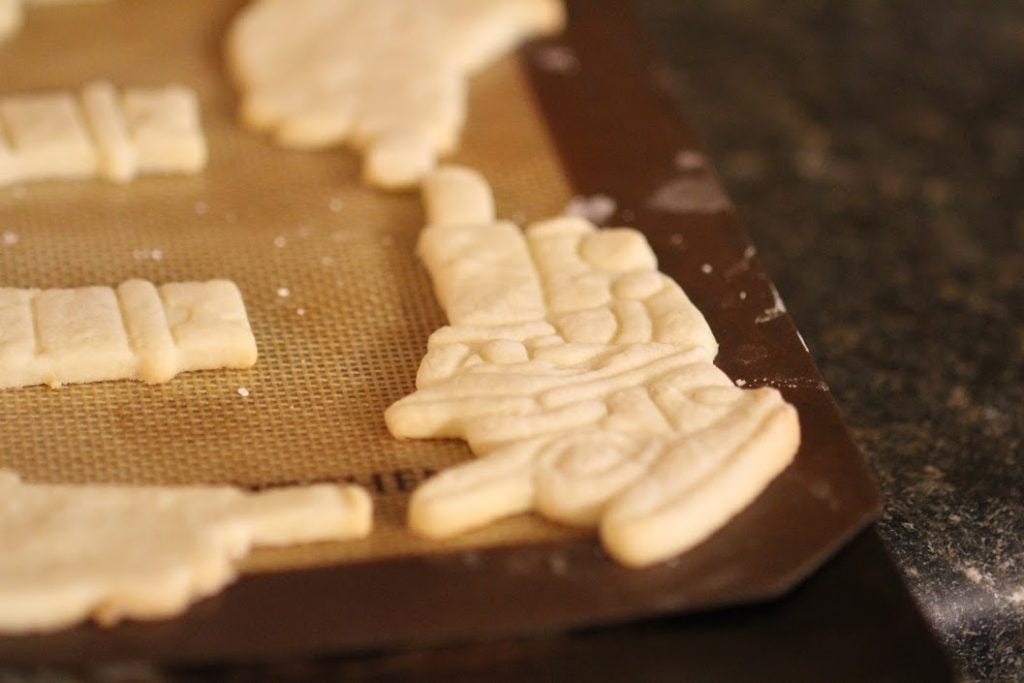
Microscope after baking. As you can see, would be fine without any icing at all.
So the science behind this dough is two-fold: one, it can't rise at all. Leaving out the leavening agents has the risk of making the cookies more like crackers, dense and tough. But the second scientific principle going on here is that we're not waking up the gluten at all. Glorious gluten, so chewy and stretchy with it's long protein strands, is what makes homemade breads heavenly to munch. In these cookies, we have a lot of flour, but very little water. Without water, the protein that is gluten is inactive. The only water in the dough is in the eggs, and I strongly suspect the addition of the surprise ingredient is what heads that off at the pass: cornstarch. I haven't put cornstarch in cookies before, but as I was looking at recipes and saw it, it made perfect sense to me. Shortbread has it's lovely delicate texture from the 'short' of not using any water at all. Flour, fat, and sugar. Delicate crumbs. Ok, that's what we're going for, but we needed some strength, hence the eggs.
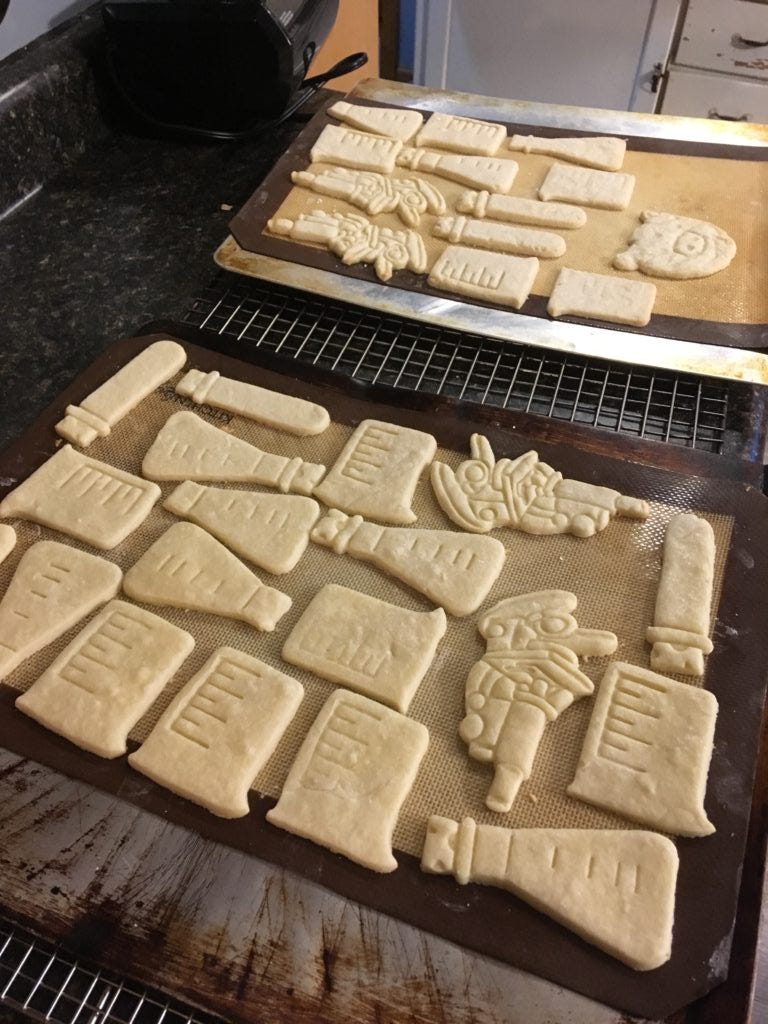
It works. I'm going to be coming back to the recipe again and again, because dang, there are some cool science cutters out there, and they look amazing even with no frosting. Which would enable me to produce some impressive looking cookies with relatively little time and effort (coffrelativelycoff). Also, there's no chilling step as you start with cold butter and don't have the water to worry about activating your gluten. They'll hang together without that step in this dough.
Precision Sugar Cookies
1 cup cold butter
1 c sugar
1 tsp vanilla extract
2 eggs
Zest of a lemon, microplaned
3 1/2 c flour
1/2 c cornstarch
Preheat oven to 375. The higher cook temperature and resulting faster bake time keeps the dough from 'melting' and moving during intial baking.
If you are not using a stand mixer, cut the butter into the sugar with a pastry cutter. In my stand mixer, I was using my batter blade, and worked the butter for a minute, then put the sugar in and worked it at medium speed until the sugar was well incorporated but not creamed. I added the eggs, lemon rind, and vanilla, blending until frothy.
Add the first 1/2 c flour and the cornstarch, and allow to mix completely, adding 1/2 c of the flour at a time until the dough has become very stiff and begins to ball and pull away from the walls of the mixing bowl. This will take a few minutes - between 3-5 - but don't worry. Normally that would be too much mixing for a cookie, this time you're ok.
Remove the dough to a surface that is well-dusted with powdered sugar, divide dough in half, and work with the first half to roll to 1/4" thick. Cut, being careful to check the dough is not adhering to your working surface. Press gently but firmly with your fingertips over all the impression areas of the cutter, then lift and tap gently against your palm to release the cookie. Place cookies on silicone mats to bake (I use airbake cookie sheets, always. You should watch the cookies closely if you are using a metal sheet pan).
Bake at 375 for 7-8 minutes, cookies should be firm to touch but have no color change.
Allow to fully cool before frosting.
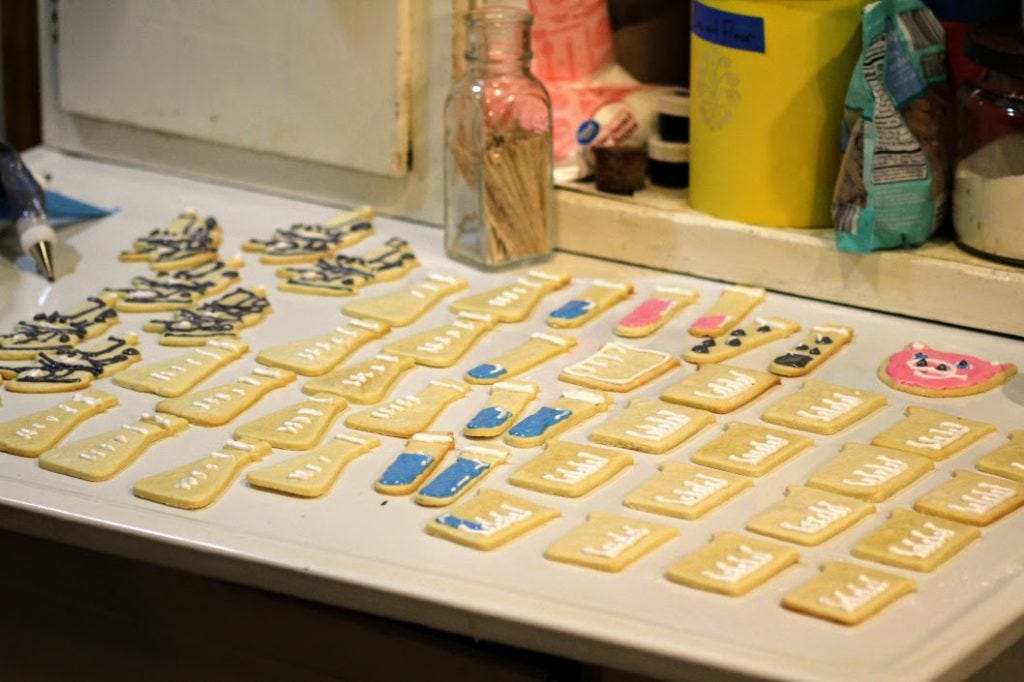
So much fun, and going with me to work in the morning for my lab colleagues to enjoy!
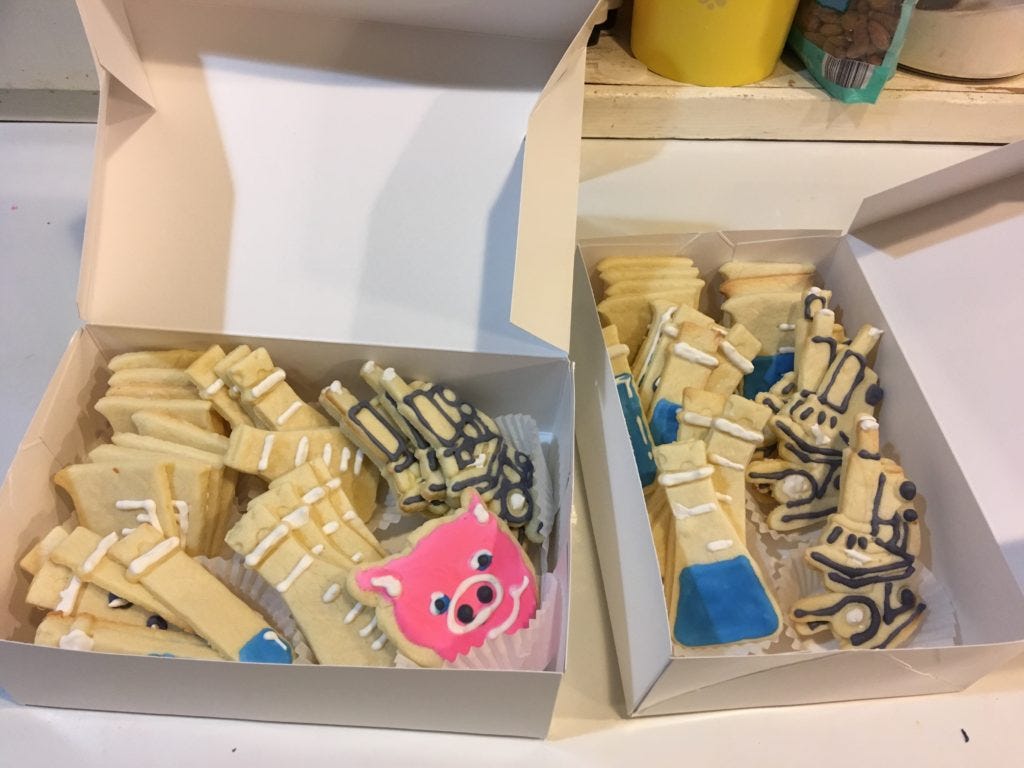
Cookie boxes are a nice little thing to have - great for transport, and they look professional and clean. Plus, you don't have plates to take home and wash.




